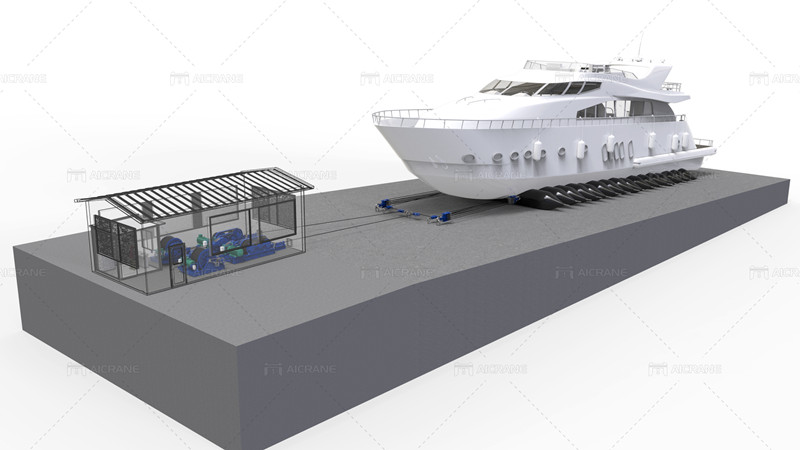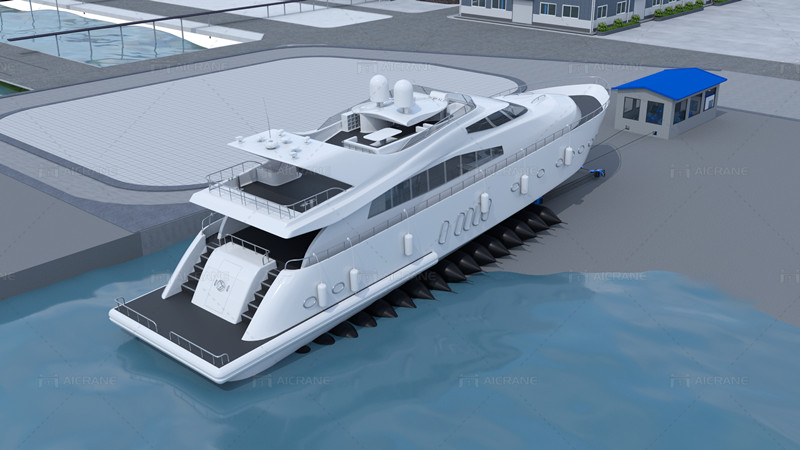Boat slipway winches are crucial for safely launching and retrieving boats from the water. They provide the necessary mechanical advantage to move boats up and down a slipway, ensuring smooth and efficient operations. Proper installation of boat slipway winches is essential to ensure their reliability, safety, and longevity. This passage outlines a detailed guide on how to install boat slipway winches, covering preparation, equipment selection, installation steps, and maintenance considerations.

Preparation
Before beginning the installation of boat slipway winches, thorough preparation is essential. This includes site assessment, equipment selection, and gathering the necessary tools and materials.
Site Assessment
Evaluate the Slipway: Inspect the slipway to ensure it is structurally sound and suitable for winch installation. The slipway should be stable, free of major cracks or damage, and have a gentle incline.
Determine Winch Position: Decide the best location for the winch based on the slipway’s layout and the typical size of the boats. The winch should be positioned to provide a direct and unobstructed pull.
Equipment Selection
Choose the Right Winch: Select a boat slipway winch that matches the weight and size of the boats being launched or retrieved. Consider factors such as load capacity, power source (manual, electric, or hydraulic), and winch speed.
Winch Mounting: Choose appropriate mounting brackets and hardware that are compatible with the winch and suitable for the installation site.
Gather Tools and Materials
Tools: Ensure you have the necessary tools, including wrenches, drills, bolts, nuts, and measuring tape.
Safety Gear: Use safety gear such as gloves, safety glasses, and sturdy footwear to protect yourself during installation.
Installation Steps
The installation of boat slipway winches involves several key steps: positioning, securing the marine winch, installing the power source, and testing the setup.
Positioning the Winch
Mark the Position: Use a measuring tape and marker to outline the exact position where the winch will be installed.
Check Alignment: Ensure the winch is aligned with the centerline of the slipway for straight pulling. Misalignment can cause uneven tension and damage to the winch or boats.
Securing the Winch
Drill Mounting Holes: Use a drill to create holes in the slipway for the mounting bolts. The holes should be slightly larger than the bolts to allow for easy installation.
Attach the Winch: Place the winch in position and insert the mounting bolts through the holes. Tighten the bolts securely using a wrench to ensure the winch is firmly anchored to the slipway.

Installing the Power Source
Manual Winches: For manual winches, ensure the handle or crank is properly attached and operates smoothly.
Electric Winches: If installing an electric winch, follow the manufacturer’s instructions for wiring. Connect the winch to a suitable power source, ensuring the electrical connections are secure and protected from water exposure.
Hydraulic Winches: For hydraulic winches, connect the hydraulic lines according to the manufacturer’s guidelines. Ensure all connections are tight and leak-free.
Testing the Setup
Initial Testing: Perform an initial test to check the winch’s functionality. Without attaching a boat, operate the winch to ensure it pulls and releases smoothly.
Load Testing: Attach a load (such as a boat) to the winch and perform a controlled test to verify that the winch can handle the load capacity without issues. Monitor the winch for any signs of strain or malfunction.
Maintenance Considerations
Regular maintenance of boat slipway winches is essential to ensure their continued reliability and safety. Follow these maintenance tips:
Regular Inspection
Check for Wear and Tear: Regularly inspect the winch for signs of wear, corrosion, or damage. Pay attention to the cables, gears, and mounting hardware.
Lubrication: Apply appropriate lubricants to moving parts to reduce friction and prevent rust. Follow the manufacturer’s recommendations for lubrication intervals and types of lubricants.
Cleaning
Remove Debris: Keep the winch clean and free of debris. After use, rinse the winch with fresh water to remove salt and dirt, which can cause corrosion.
Dry Thoroughly: After cleaning, ensure the winch is thoroughly dried to prevent moisture buildup and rust formation.
Electrical Components
Inspect Wiring: For electric winches, regularly inspect the wiring for signs of wear, corrosion, or damage. Replace any faulty components immediately.
Battery Maintenance: If the winch is battery-operated, ensure the battery is regularly charged and in good condition. Clean the battery terminals to prevent corrosion.
Hydraulic Components
Check for Leaks: For hydraulic winches, regularly check the hydraulic lines and connections for leaks. Address any leaks immediately to prevent loss of hydraulic fluid and winch malfunction.
Fluid Levels: Maintain proper hydraulic fluid levels as recommended by the manufacturer. Replace the hydraulic fluid at recommended intervals.
Installing boat slipway winches involves careful preparation, precise installation, and regular maintenance to ensure optimal performance and safety. By following the steps outlined above, you can effectively install and maintain your boat slipway winch, ensuring reliable and efficient operation for launching and retrieving boats. Proper installation and maintenance not only extend the lifespan of the winch but also enhance safety and ease of use, making boating activities more enjoyable and hassle-free.